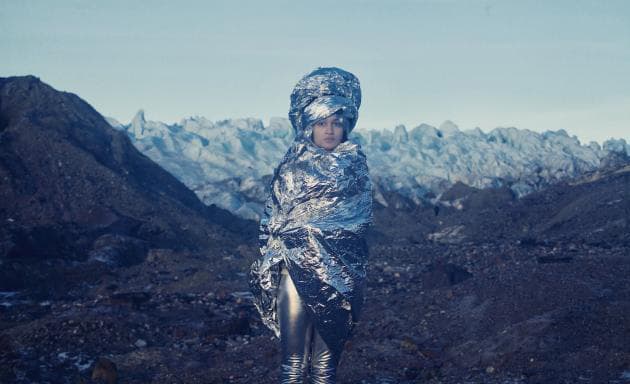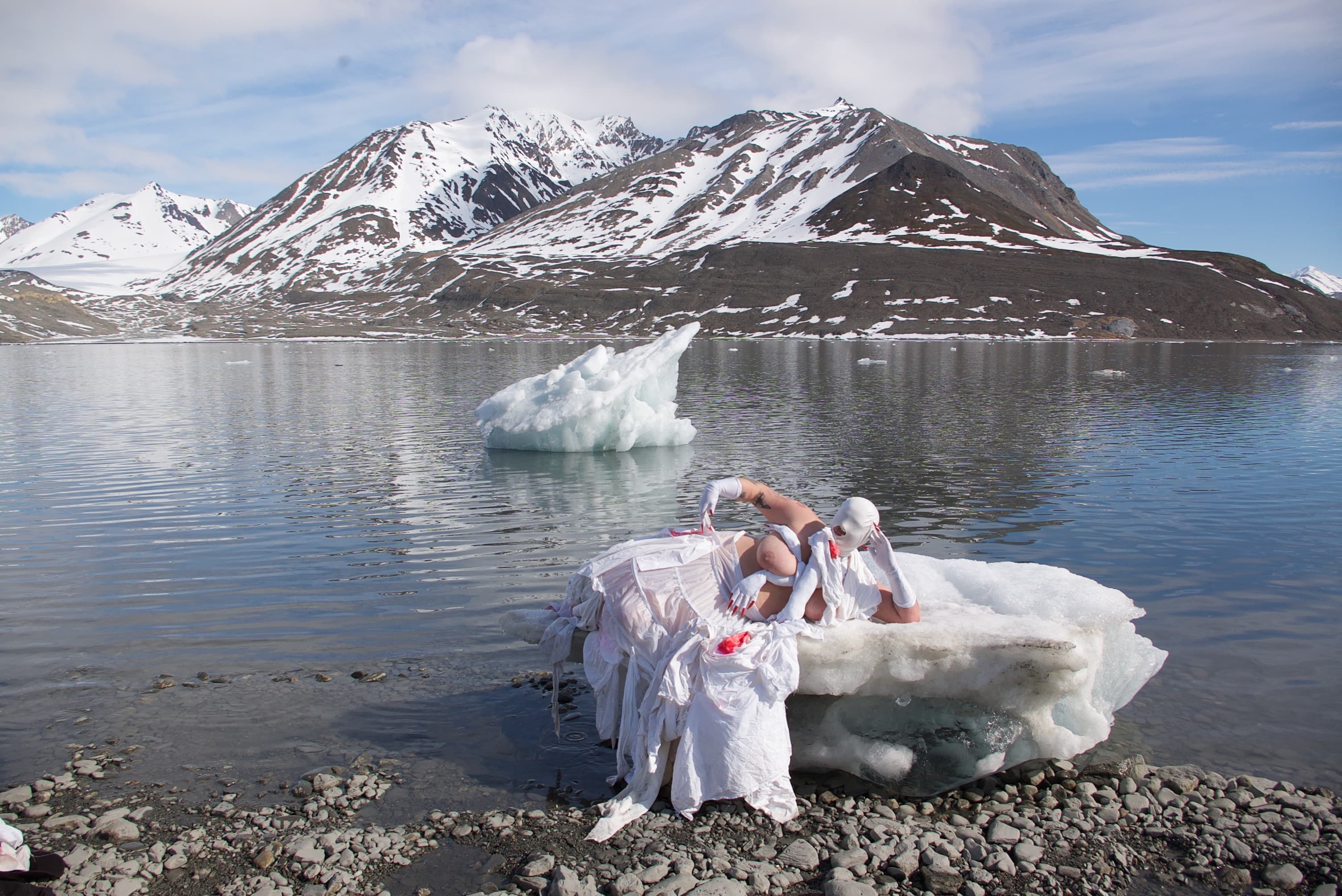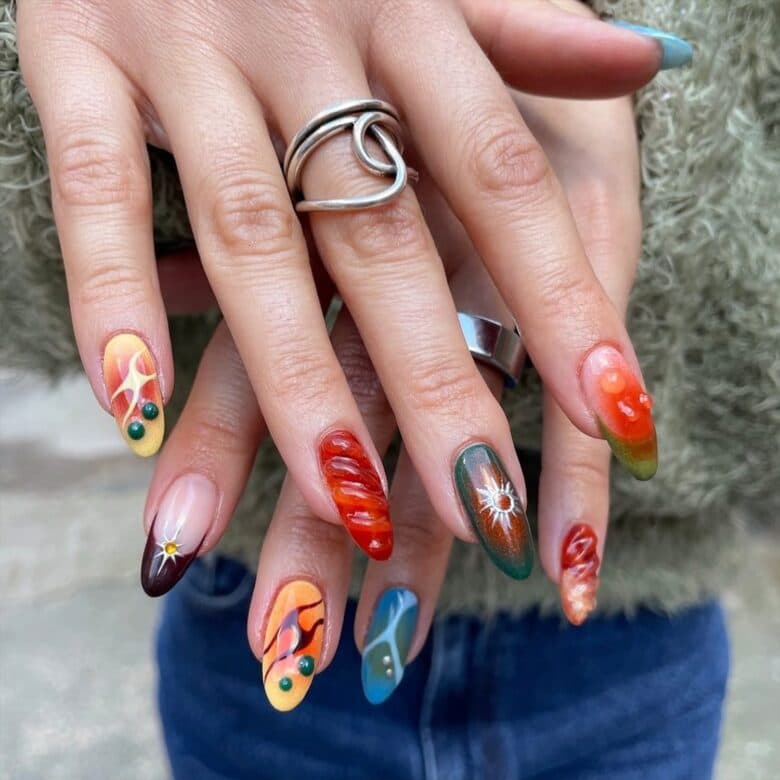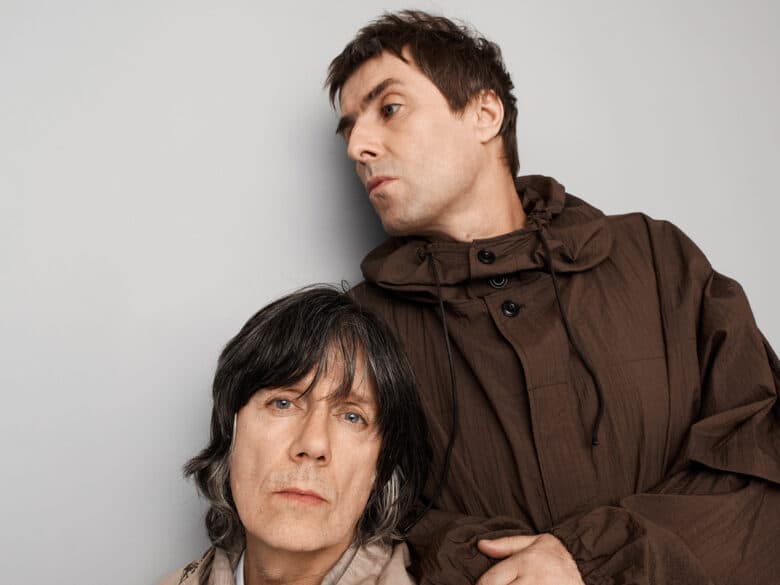Feminism as witchcraft
Somerset House’s The Body Series explores the social and political issues with the power structures in which bodies are created and exist within whilst exploring corporeal strategies to disrupt these structures, on either a personal or collective level. The first event in the series, taking place on 16 November, is in collaboration with New Suns, a feminist curatorial and storytelling project founded by Sarah Shin.
Inspired by Gethen, an ungendered world also known as Winter in visionary author Ursula K. Le Guin’s book The Left Hand of Darkness, New Suns and Somerset House Studios present a celebration of all gender identities and expressions, with a performative reading from the novel, as well as music, astrology readings, poetry and protection spells and rituals from Roz Kaveney, Francesca Lisette, So Mayer, Lola Olufemi, Nisha Ramayya, Linda Stupart, Ayesha Tan-Jones, plus more.
Ahead of the event, we speak to Shin about Ignota Press — her radical, occult-inspired publishing company — and why witchcraft is gaining currency as an alternative form of political protest.
What’s the story behind Ignota Books?
Born during the last days of 2017 in the Peruvian Andes out of a shared intention to formulate an experiment in the techniques of awakening, Ignota is the field of mine and my co-founder Ben Vickers’ confluence of thinking and lines of enquiry. Meaning ‘unknown’, we take our name from Hildegard of Bingen’s mystical Lingua Ignota to open a space – at the intersection of technology, myth-making and magic – which welcomes an unknown language for this turbulent passage from the collective hallucination of one epoch to the next.
How can magic and myth-making help us reconceptualise the world around us?
As an alternative system of reality, magic is a source of potentiality. The realms of the ineffable and the unknowable are off-the-grid zones where it’s possible to reimagine and re-enchant the world around us. Myth-making involves the creation of stories – and as fabulous artifices, fictions illumine that all is artifice, so that the limits of our perception might be transcended in order to imagine and build new worlds. Lastly, we need inner resources if we’re to re-make anything and magic, mythology and storytelling provide practices and forms for psychic refinement, nourishment for the soul and ways of relating.

In response to the return of the far-right in contemporary politics, individuals have begun to embrace hexing rituals as an alternative form of protest. Why do you think this is?
Contemporary challenges demand strategies of survival based on different modes of seeing, being and world-making, for which witchcraft and magic provide an appropriate set of languages, practices and models. Further, as ritual practice accesses personal power as well as giving form for collectivity, it’s not difficult to see why there’s been a revival of groups like W.I.T.C.H and the appeal of covens across America hexing Trump, especially as they involve vitality and imagination. Actions involving pleasure and fun are a bulwark against despair. And activists like Audre Lorde and Angela Davis have taught that renovation of the self and attention to the body and the interior world must be a part of liberatory work. You can’t run on an empty tank and if you don’t sort yourself out because you’re so invested in ‘the cause’, you’re quite possibly hurting others.
Why is it so important to push forward with a truly radical version of feminism?
Is there a singular version of feminism that is truly radical? I think that the plurality of movements, politics, philosophies, practices and so on, which constitute utopian feminist efforts for liberation from oppression, should work towards conditions in which such activities are no longer necessary. Anti-trans rhetoric, sex worker exclusionary radical feminism and liberal feminism hinder this movement by perpetuating various interlocking factors of systemic oppression ranging from maintaining capitalist relations and the enforcement of the gender binary, to the policing and hatred of certain bodies.
How did your New Suns project start and what are its aims?
New Suns began life as a literary festival at the Barbican Centre in 2018. I’d published Audre Lorde with my feminist publisher Silver Press in October 2017, and through the publication of Your Silence Will Not Protect You, a new collection I edited to bring together her prose and poetry, I started to discover the 1980s scene of feminist exchange and publishing which was incredibly active. There was an International Feminist Bookfair held in 1984 in London, where Audre Lorde spoke, which made me think that there are few public spaces like this linking feminist discourse and print culture. 2017 was also the year of #MeToo and Trump’s inauguration – a time of collective trauma – so I wanted to create something more positive with New Suns, a place where people could come together. New Suns has evolved to become a broader creative platform for curation and storytelling, but its aims remain the same: to create a generative space for exploration, experiment and connection.

What was the process of curating the New Suns event at Somerset House like?
I wanted to create an event that celebrates the presence and contributions of trans and queer people to feminist discourse and practice during a time when there was a visible groundswell in trans-exclusionary rhetoric in the British mainstream. The perennial explorer Ursula K. Le Guin’s novel The Left Hand of Darkness provided inspiration for a programme celebrating both ungendering and all gender expressions, she said: “I began to want to define and understand the meaning of sexuality and the meaning of gender, in my life and in our society… The Left Hand of Darkness, is the record of my consciousness, the process of my thinking.” Her world Gethen, an icy planet also known as Winter, where the inhabitants shift genders and practice the untrance, was the starting point for commissioning artists, poets, witches and DJs.
How does Winter is Coming open the door for New Suns to being to redefine our relationships to our bodies?
Winter is Coming starts with Le Guin’s imagination of a planet permanently covered in ice to open out into polar imaginaries. This method of speculation is the entrance into exploring themes of the binary and its dissolution, connection, liminality and difference. It hopes to encourage a greater fluidity in the way we relate to our bodies, a greater self-acceptance of changes, ambiguities and imperfections, and a societal shift away from categorising some bodies as more human than others.
What other projects do you have coming up that you are excited about?
Ignota is collaborating with London Contemporary Music Festival on their ‘Witchy Methodologies’ programme on some events, experiences and mysteries. I’m also really excited about New Suns’ The Tender Interval, an interdisciplinary convening over four days forthcoming at the ICA in February 2020 with artists including HELM. It’s a curatorial collaboration between myself and Sara Sassanelli that takes time as material, and dancing and music as vehicles for transformation and harmonies with musica universalis. I’m also working on some collaborations, which include a film about witchcraft, language and power with Elizabeth Sankey, film-maker and musician, and with the artists Ed Fornieles and Ralph Pritchard, developing a project called “The Work”, an enquiry into contemporary “masculinities” and post-patriarchal futures.
The Body Series: New Suns takes place on 16 November, 17.30 – 21.00 at London’s Somerset House. Further information can be found here.

